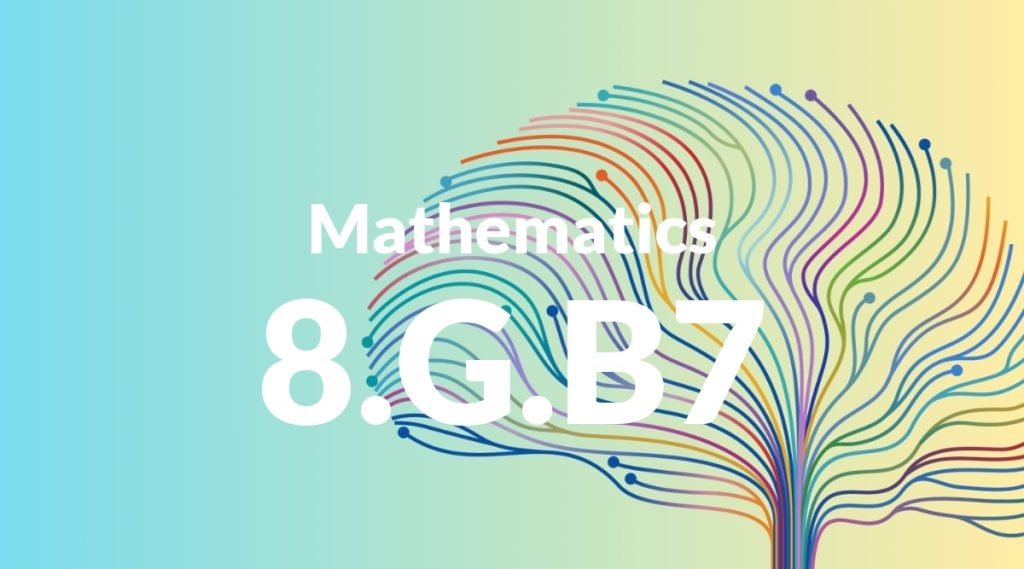Standard: 8.G.B7 – Apply the Pythagorean Theorem to determine unknown side lengths in right triangles in real-world and mathematical problems in two and three dimensions.
Grade level: Grade 8
Subject: Mathematics
Domain: Geometry
Teacher Overview
This standard focuses on applying the Pythagorean Theorem to solve real-world and mathematical problems involving right triangles. Mastery of this standard is crucial as it lays the foundation for understanding more advanced geometric concepts and trigonometry. Students should be able to identify right triangles and understand the basic properties of triangles. They should also be comfortable with basic algebraic operations such as squaring numbers and taking square roots.
Upon mastering this standard, students will be able to tackle more complex geometric problems involving trigonometry and will be well-prepared for high school geometry and beyond. They will also be able to apply these skills in various real-world contexts.
Common Misconception 1
A common misconception is that the Pythagorean Theorem can be applied to any triangle. This is incorrect because the theorem specifically applies only to right triangles, which have one angle measuring exactly 90 degrees.
Intervention 1
To remediate this misconception, provide students with a variety of triangle examples and non-examples. Use visual aids to highlight the right angle in right triangles and engage students in activities that require them to identify right triangles.
Common Misconception 2
Another common misconception is that students may forget to square the side lengths or incorrectly sum the squares of the sides. This leads to incorrect results when applying the theorem.
Intervention 2
Address this misconception by breaking down the steps of the Pythagorean Theorem in a guided practice format. Use visual aids and interactive tools to show the geometric interpretation of squaring the side lengths and taking the square root of the sum.
Prerequisite Knowledge
Students should understand the basic properties of right triangles, including recognizing right angles and the relationship between the sides of a triangle. They should also be familiar with basic algebraic concepts and operations.
Subsequent Knowledge
After mastering this standard, students will be able to solve more complex geometric problems involving trigonometry and will be prepared to understand the relationships between angles and sides in non-right triangles using the Law of Sines and the Law of Cosines.
Instructional Activities
- Hands-on activity measuring the height of objects using shadows and the Pythagorean Theorem
- Interactive coordinate plane exercises to find distances between points
- 3D modeling tasks to calculate lengths of diagonals in rectangular prisms
- Designing and calculating dimensions for ramps in a practical project
- Navigation exercises using maps to find shortest paths




